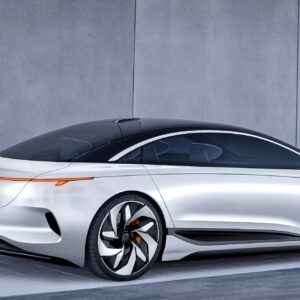After years testing techniques for its autonomous cars, Google have now patented a system that will cause cars to ‘crumple’ on impact to lessen severity in the case of a crash.
This patent suggests ways that would make certain panels of the cars withdraw to soften any impact made with another car. This could be done by pairing the panels with a sensor that would gauge the size of approaching objects before deciding the best action to take to avoid maximum damage.
Several details in the US patent suggest a number of different ways that the bodywork panels may be moved to achieve this including the bumper section of wings fixed using pins that can be broken down by actuators on the car’s chassis. On impact, these pins would trigger and break, quickly making the panel pull back. Another suggestion to achieve similar results involves panels or hinges being fixed to grooves so that they can be pulled clear of an object.
A spokesperson from the AA explained that, more often than not, certain incidents such as passengers running between parked cars, happen too quickly for a normal driver to react. European NCAP tests have already looked at potential changes regarding the materials used for car bumpers, bonnets and wings to hopefully reduce the amount of road users injured from year to year. Some cars on the road’s today have pop-up bonnets that increase the distance between the bonnet’s surface and the hard part of the engine – this is what usually causes the most severe injuries. Another change has shown airbags that spring up from the bottom of the windscreens to cushion the blow on impact.
This ‘crumpling’ system should improve the safety of Google’s self driving cars, now known as Waymo, which began back in 2009. Since then, the autonomy of the vehicles have vastly improved and are continued to be tested in a number of areas throughout the US.
This most recent patent by Google is a lot less strange than their previous ‘sticky car’ patent which involved a sticky coating being applied to the bonnet of the driverless car in the event of a collision with a pedestrian. Rather than being thrown off and, most probably injured further, the pedestrian would instead become glued to the car’s bonnet.







